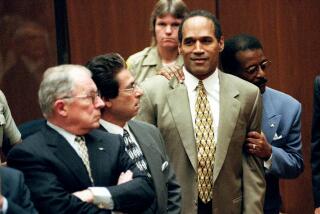After the riots: The day L.A. changed
Twenty years ago in April, widespread rioting revealed the limitations of the Los Angeles political system. But that year also brought something to celebrate: voter passage of historic police reform on June 2, 1992.
The beating of Rodney King on March 3, 1991, changed the way the city felt about the Los Angeles Police Department — and about its controversial chief, Daryl F. Gates. More fundamentally, the beating pointed out serious structural problems in the governance of the department.
The biggest issue was the fact that police chiefs enjoyed Civil Service status. This job protection dated back to 1937, when Los Angeles was in the middle of a corruption crisis that eventually led to the recall of Mayor Frank Shaw. City voters decided then that police chiefs should be given Civil Service protection to insulate them from politics.
But that protection also brought an unintended consequence: A succession of chiefs, starting with William Parker in 1950, used their status as civil servants to thumb their noses at elected officials. As journalist and author Lou Cannon wrote, Parker “wanted a department that answered to no one but its chief. He achieved this goal and in the process became a chief who answered to no one.”
That kind of arrogance was fully embraced by Gates, who as a young officer had been Parker’s driver. After the King beating, there were calls for Gates to step down, but he ignored them. The Police Commission voted to put him on paid leave, but after just a few days, the City Council voted to reinstate him. Mayor Tom Bradley asked Gates to resign. But the chief refused and the crisis continued.
The turning point was the appointment of the Christopher Commission. At the end of March, just weeks after the beating, Gates named former state Supreme Court Justice John A. Arguelles to head an inquiry into the King beating. On April 1, Bradley named the city’s leading private citizen, Warren Christopher, to head an Independent Commission on the Los Angeles Police Department.
On April 4, the two agreed to merge their commissions. Christopher would be chairman and Arguelles vice chairman. Bradley would appoint six more members, and Gates two more.
The commission got right to work, and on July 9, 1991, issued its blunt conclusions. There were, it asserted, “a significant number of officers in the LAPD who repetitively use excessive force,” and “the failure to control these officers is a management issue that is at the heart of the problem.” These problems demanded fundamental change: “Los Angeles should have a Police Department whose chief is accountable to civilian officials.”
The report included shocking evidence of racism among officers, quoting excerpts of communications from police car computers. In the most infamous example, officers referred to a black couple having a domestic dispute as “gorillas in the mist.”
The report recommended major structural changes, including eliminating the chief’s Civil Service protection and enhancing the independence of the Police Commission from the chief. The Christopher Commission also joined the chorus of those calling on Gates to step down.
The commission’s recommendations were brought to the City Council in September. After a contentious meeting, the council members finally voted to put most of the recommendations on the June ballot as Charter Amendment F. But long before the vote, on April 29, 1992, the officers who beat Rodney King were acquitted and the city exploded.
Gates’ behavior during the violence — on the first night, he left Parker Center to attend a fundraiser against Charter Amendment F — solidified the public’s dissatisfaction with his leadership. A Times poll in May 1992 put his disapproval rating at 81%.
In the June election, Charter Amendment F, which limited police chiefs to two five-year terms and set up a mechanism for more civilian review of officer misconduct, passed by a margin of 2 to 1. The measure carried virtually every part of the city, with the strongest support coming from black, Jewish and Latino neighborhoods. Only in the San Fernando Valley’s 12th District did the measure fail to win a majority. But even in that conservative area of the city, police reform came close to passing. The frayed and battered Bradley coalition of African Americans, Latinos, Jews and other white liberals had arisen from the mat for perhaps its greatest victory.
Gates retired on June 26, 1992, though not before ranting publicly that “crummy little politicians” were endangering the department. Bradley left office when his term ended in 1993, having finally prevailed in a battle that had lasted decades.
In April, when the city marked the 20th anniversary of the civil disorder, most observers agreed that one thing had changed: the behavior and accountability of the LAPD. This was no small achievement. It took skilled political leadership, the well-regarded and influential Christopher Commission, and voters who endorsed change despite warnings that Charter Amendment F would make them less safe. In these times of gridlock, the anniversary of that achievement is well worth celebrating.
Raphael J. Sonenshein, executive director of the Edmund G. “Pat” Brown Institute of Public Affairs at Cal State L.A., is the author of “Politics in Black and White: Race and Power in Los Angeles.”
More to Read
A cure for the common opinion
Get thought-provoking perspectives with our weekly newsletter.
You may occasionally receive promotional content from the Los Angeles Times.






